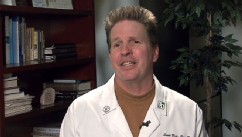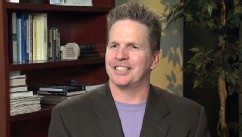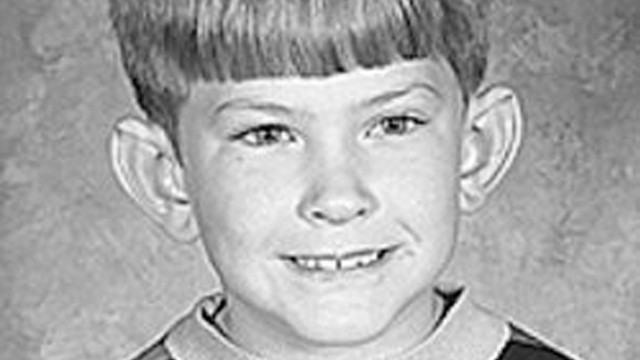New, nationally projectable survey results released today by The Partnership at Drugfree.org and MetLife Foundation confirmed that one in four teens has misused or abused a prescription (Rx) drug at least once in their lifetime - a 33 percent increase over the past five years. The Partnership Attitude Tracking Study (PATS) also found troubling data on teen misuse or abuse of prescription stimulants. One in eight teens (13 percent) now reports that they have taken the stimulants Ritalin or Adderall when it was not prescribed for them, at least once in their lifetime.
Contributing to this sustained trend in teen medicine abuse are the lax attitudes and beliefs of parents and caregivers. In fact, nearly one-third of parents say they believe Rx stimulants like Ritalin or Adderall, normally prescribed for attention deficit hyperactivity disorder (ADHD), can improve a teen's academic performance, even if the teen does not have ADHD. Parents are not effectively communicating the dangers of Rx medicine misuse and abuse to their kids, nor are they safeguarding their medications at home and disposing of unused medications properly.
The Partnership at Drugfree.org Responds to Rx Epidemic with The Medicine Abuse Project
In response to the continued high prevalence of teen prescription medicine abuse as reported in the 2012 PATS data, The Partnership at Drugfree.org is helping educate parents, community stakeholders and others about the risks of this dangerous behavior. The Partnership at Drugfree.org leads The Medicine Abuse Project, a multi-year initiative with the goal of preventing half a million teens from abusing prescription medicine by 2017.
The Medicine Abuse Project provides comprehensive resources to parents, educators, health care providers, law enforcement officials and others about the growing problem of teen medicine abuse. The Project aims to mobilize parents and the public at large to take action and help solve the problem of teen substance abuse. This includes learning about the issue, talking with their kids about the dangers of misuse and abuse of prescription drugs and properly monitoring, safeguarding and disposing of excess Rx drugs in their homes.
Drug Enforcement Administration (DEA) Holds Nationwide Prescription Take-Back Day on April 27th
One way parents, grandparents and other caretakers can take immediate action is by participating in the upcoming DEA-facilitated National Prescription Drug Take-Back Day, taking place this Saturday, April 27, 2013.
"Medicine cabinets are the number one access point for teens who want to misuse and abuse prescription drugs. That's why we are making a concerted effort to let parents and caregivers know how important it is to safely dispose of their unused, unwanted or expired medicines. Doing so can literally save a life," said Marcia Lee Taylor,
SVP of Government Affairs at The Partnership at Drugfree.org. "This Saturday's DEA Take-Back event gives everyone a chance to protect their kids from the dangers that medicine abuse poses in their own homes. We should all take this simple step and clean out our medicine cabinets."
Collection sites will be set up around the country, open for medicine drop-off between the hours of 10:00 a.m. and 2:00 p.m. Those interested in disposing of their medicine at a take-back location this Saturday can visit The Medicine Abuse Project website to find the nearest site to safely drop off their unused, unwanted or expired prescription medicines. In the five previous Take-Back events, more than 2 million pounds of prescription medicines were safely dropped off and removed from circulation.
The DEA Take-Back Day provides a tangible way for parents to help curb medicine abuse. The PATS data released today confirms that misuse and abuse of prescription drugs is now a normalized behavior among teens.
Concerning Trends in Teen Prescription Drug Abuse According to the New PATS Data (2008-2012)
One in four teens (24 percent) reports having misused or abused a prescription drug at least once in their lifetime (up from 18 percent in 2008 to 24 percent in 2012), which translates to about 5 million teens. That is a 33 percent increase over a five-year period:
- Of those kids who said they abused Rx medications, one in five (20 percent) has done so before the age of 14.
More than a quarter of teens (27 percent) mistakenly believe that "misusing and abusing prescription drugs to get high is safer than using street drugs," and one-third of teens (33 percent) say they believe "it's okay to use prescription drugs that were not prescribed to them to deal with an injury, illness or physical pain."
"These data make it very clear: the problem is real, the threat immediate and the situation is not poised to get better," said Steve Pasierb, President and CEO of The Partnership at Drugfree.org. "Parents fear drugs like cocaine or heroin and want to protect their kids. But the truth is that when misused and abused, medicines - especially stimulants and opioids - can be every bit as dangerous and harmful as illicit street drugs. Medicine abuse is one of the most significant and preventable adolescent health problems facing our families today. As parents and caring adults, we need to take action to address the risks that intentional medicine abuse poses to the lives and the long-term health of our teens."
Significant Increase in Teen Abuse of Stimulants Ritalin and Adderall, Rx Painkiller Abuse Flattening
Rx stimulants are a key area of concern, with misuse and abuse of Ritalin and Adderall in particular driving the noted increases in teen medicine abuse. Stimulants are a class of drugs that enhance brain activity and are commonly prescribed to treat health conditions including ADHD and obesity. The 2012 data found:
- One in eight teens (about 2.7 million) now reports having misused or abused the Rx stimulants Ritalin or Adderall at least once in their lifetime.
9 percent of teens (about 1.9 million) report having misused or abused the Rx stimulants Ritalin or Adderall in the past year (up from 6 percent in 2008) and 6 percent of teens (1.3 million) report abuse of Ritalin or Adderall in the past month (up from 4 percent in 2008).
One in four teens (26 percent) believes that prescription drugs can be used as a study aid.





















